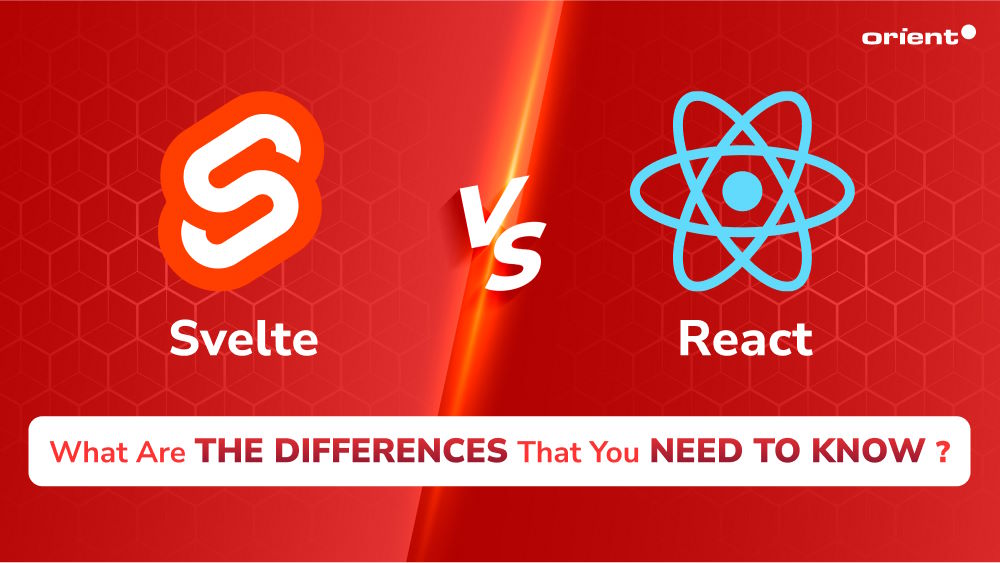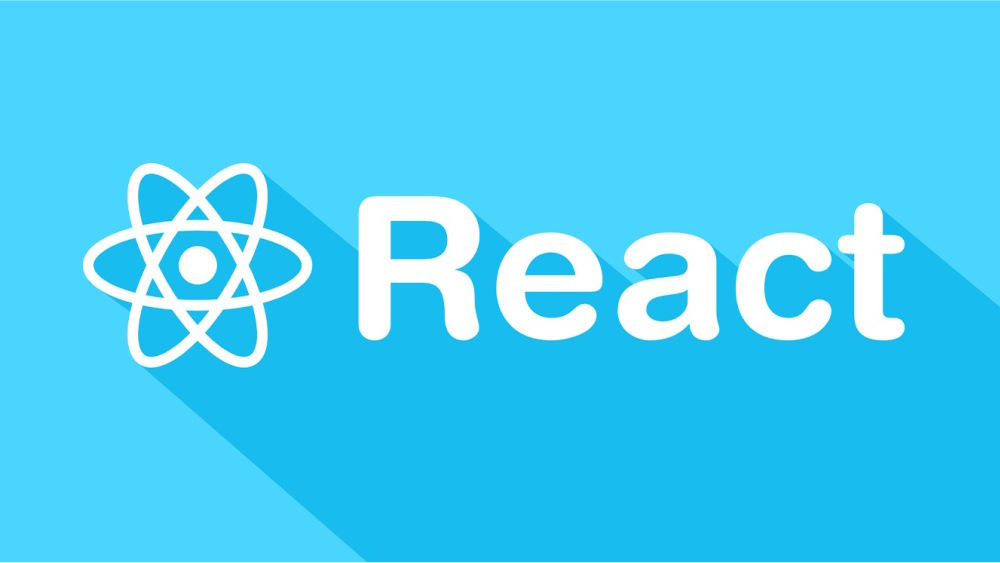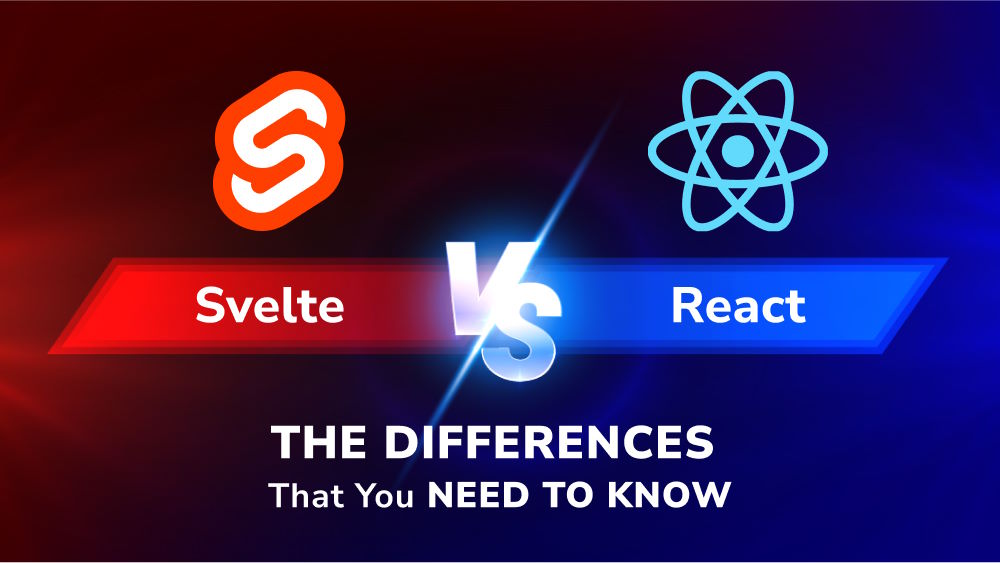Svelte Vs. React: What Differences Are the Differences That You Need to Know?

Content Map
More chaptersWhen you hear the phrase “popular JavaScript framework,” what are the names that come to your mind? Is it Angular for its ability to build large-scale, feature-rich web applications? Svelte for shifting much of the work to compile time, creating lightweight applications? Or are you thinking of React, a framework with a powerful library for building UIs (User Interfaces), especially those for single-page applications (SPAs)?
It is easy to nail down the most popular JavaScript framework names. However, it can be harder to decide which one to use for your software development project. In today’s article, we would like to take a deep dive into two of JavaScript’s most well-known frameworks - React and Svelte, including what they do, their pros, cons, similarities, and differences.
What Do You Need to Understand about Svelte?

What Is Svelte?
Svelte’s website defines it as “a method of building user interface elements that people see and interact with in their browsers, such as a contact form, comment area, and navigation bar. The Svelte compiler converts your components into CSS, which styles the page, and JavaScript, which may be used to render the HTML for the page.”
Deemed one of the most popular web development frameworks in a 2022 Stack Overflow survey and used by over 94,000 websites worldwide, Svelte is a web development that changes how we build applications.
How Svelte Works
Svelte’s compiler-based approach directly manipulates the Document Object Model (DOM), bypassing the need for a virtual DOM. Svelte compiles HTML templates into optimized JavaScript code, leading to smaller bundle sizes and better client performance. As its creator, Rich Harris, refers to it as a “framework-less framework,” Svelte stays true to its meaning of “lean and elegance” and streamlines development by promoting a component-based architecture and minimizing boilerplate code (Instead of having to deal with setup or reliance on third-party libraries, developers can focus on building the application’s fundamental logic). This encourages the creation of high-performing applications easily.
History
With the aim to address issues in existing JavaScript frameworks, Rich Harris, a New York Times developer, introduced Svelte in 2016. The framework quickly gained popularity thanks to its user-friendly syntax, small bundle sizes, and performance optimizations. Following the initial release, major updates and improvements were made, including version 2.0 in 2017 and version 3.0 in 2019.
Svelte’s Key Features
Svelte means slender or moving with ease. Its features live up to the framework’s name.
Reactive Components
Svelte is reactive. By reactive, we mean it automatically updates changed values to the DOM at build time. Svelte developers can construct components that respond to changes in their internal state or external data effortlessly. There is no need for developers to use third-party management tools to perform this task.
Component-based Architecture
As a modern framework, Svelte promotes the breakdown of user interfaces into encapsulated parts. This allows for better code reusability and maintainability.
Smooth Animation and Transition Support
Svelte is a great framework choice for smooth transitions and animations. If you are a developer looking to build web applications with attractive and dynamic user interfaces, Svelte is the way to go.
Framework-agnostic Approach
The phrase “Framework-Agnostic” generally refers to the process of creating software products and applications independent of any particular platform or programming framework. Svelte is capable of operating without relying on any runtime libraries, so the framework integrates smoothly with your existing projects.
Fewer Codes
Developers always aim to create the most impact with the least lines of code. Aware of such concern, Svelte introduces TypeScript, a syntactical superset of JavaScript, that can help accomplish this aim.
Svelte can reduce the code size significantly, up to 30 or 40%, compared to React or Vue. It is worth noting, however, that this GitHub study indicates that Svelte apps produce larger JavaScript bundles than React once they reach a certain size, but it’s unlikely your app will ever reach such size.
Svelte’s Pros and Cons
Pros
- Svelte generates faster loading times and stellar performance thanks to its compilation approach, which in turn creates a small bundle size.
- Not only is Svelte code easy to read, but it is also easy to learn. Since Svelte is a hybrid language of vanilla HTML, CSS, and JavaScript/TypeScript, developers don’t need to go through a steep learning curve. The framework also has extensive documentation and detailed tutorials.
- Developers can focus more on creating solutions since there is less boilerplate code.
- Svelte has its own minimal state management solution.
- Every element in Sevlte can be easily created without the need for extra lines of code.
- Svelte applications run faster compared to other applications.
Cons
- The community is smaller compared to other frameworks.
- There are not many tools or libraries related to Svelte available.
- Small open-source ecosystem.
- It lacks IDE support.
What Do You Need to Understand about React?

What React Is
React is a progressive front-end web development framework, though some refer to it as a library instead. It is a well-established framework with a large number of libraries built around it.
Primarily used for building complex interfaces, React has an original way of approaching front-end development. In particular, React developers use virtual DOM. Virtual DOM creates an in-memory representation of the actual DOM to optimize updates. It groups a certain number of codes and then runs them in the browser’s JavaScript engine, which will update the actual DOM.
Rather than manipulating the DOM, the virtual DOM observes any changes made and looks for the most optimal ways to implement changes to the real DOM. Developers focus on describing their desired UI state in a declarative style since React is based on a component-based model. In other words, the entire React application is broken down into smaller components – individual, standalone React code units, improving code maintainability.
History
React was developed by Facebook (now known as Meta) in 2013. The framework quickly gained popularity and was even deemed the second most used development framework in 2023. React has had multiple significant version releases: React 16 now includes Fibre, React 17 has better event delegation, and React 18 features concurrent rendering. It is now commonly used for React Native-powered mobile apps, web apps, and single-page apps. The React community actively participates in debates and advances the platform.
React Core Features
Component-based Architecture
Through its component-based architecture, React encourages a reusable and modular approach to UI development. UIs are built into encapsulated components that manage their own state. Those components can then be composed together to create complex user interfaces.
Declarative Syntax
React framework makes creating interactive UIs easy for developers. What users need to do is design the views for the different states of the application. Then, React will efficiently update and render the components when there is a change in the data.
JavaScript Syntax
JSX, which stands for JavaScript Syntax, allows developers to write HTML-like code within JavaScript files. This is because React rendering logic needs to be coupled with other UI logic, such as events or state management. By blending HTML structure with JavaScript logic, JSX makes it easy to create and manage UI components. This is a powerful tool for developers who want to build dynamic and interactive web apps using React.
Virtual DOM
A noteworthy feature of React is its ability to optimize UI updates when building web applications. The framework creates a lightweight representation of the DOM in memory, allowing effective updates to improve performance.
One-way Data Binding
React applies one-way data binding, also known as an unidirectional data flow pattern. This means the data flows down from parent to child components, making it easier to comprehend and debug application logic. This also leads to increased flexibility and efficiency.
React’s Pros and Cons
Pros
- Code maintenance and code reusability are promoted thanks to component-based architecture.
- Virtual DOM results in efficient UI updates and improves application performance.
- Vast ecosystem and active community.
- Search engine optimization friendly.
- React native allows cross-platform mobile applications using React and JavaScript.
Cons
- Steep learning curve since JSX is a newer and more difficult technology.
- Virtual DOM may create performance overhead for smaller and simpler applications.
- It lacks proper documentation, so beginners can find the library even more challenging.
- React is a library, not a web framework, with limitations such as lack of pre-packaged features, security concerns, and reliance on external libraries for app functionality.
The Similarities Between Svelte and React
As both Svelte and React are JavaScript frameworks, they share a number of similarities.
- Component-based Architecture: Both React and Svelte facilitate the reusable and modular UI components for better code reusability and maintenance.
- Reactivity: Components in React and Svelte respond to data changes automatically and update the user interface accordingly.
- Even though React and Svelte use different tools, both aim to optimize UI rendering.
- The two languages prioritize the developer’s experience by working to simplify the development process with detailed documentation and community support.
- Both languages provide developers with a familiar language foundation - JavaScript.
Svelte and React’s Differences You Need to Know

| React | Svelte | |
|---|---|---|
| Popularity | More popular | Less popular |
| Performance | - Most of the work is done in the compile step - No virtual DOM → Faster | - Most of the work is done on the browser - Virtual DOM → Slower |
| Bundle size | Same application: Larger (41.2 kB) | Same application: Smaller (2.1 kB) |
| Ecosystem | Larger ecosystem | Smaller ecosystem |
| Documentation | Poor documentation | Extensive documentation |
| Developer experience | Smooth experience | Can be cumbersome at times |
| Community support | Stronger | Small community |
| Debugging | Simple, bugs are easy to pinpoint | Complex, errors can be hard to spot |
| Maintenance | Can be challenging, especially in large complex projects | Easy to maintain with a small codebase |
| Learning curve | Steeper | Gentler |
| Employment opportunity | Growing | In high demand |
All in all, both languages bear their strong and weak points. It all comes down to your project needs, developer’s preferences, and so on. For example, React’s rich ecosystem and tools are suitable for large and complex projects. Let’s say, in another example, that you want to prioritize rapid prototyping in a small project; Svelte would be the suitable framework.
Should you have more inquiries regarding which JavaScript framework to choose, reach out to Orient Software, and we will be happy to answer all your queries or send you a quote within three business days.







